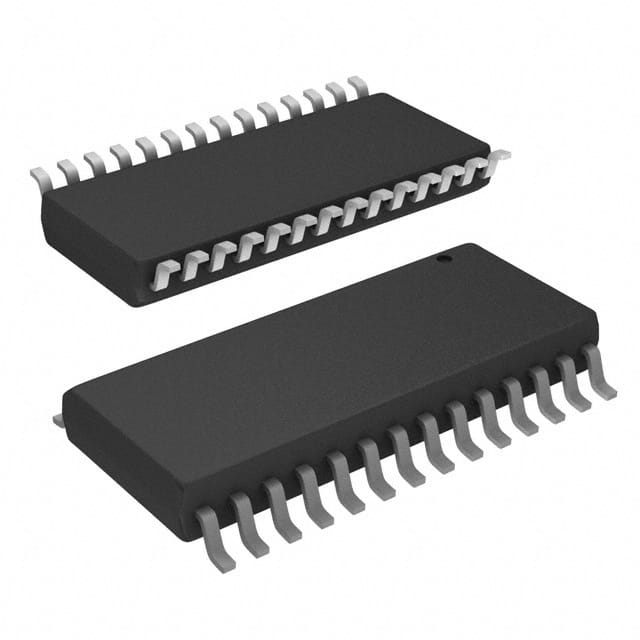Viz Specifikace pro podrobnosti o produktu.

AS2536
Product Overview
- Category: Integrated Circuit (IC)
- Use: Signal Amplification and Processing
- Characteristics:
- High Gain
- Low Noise
- Wide Bandwidth
- Package: Dual Inline Package (DIP)
- Essence: Operational Amplifier (Op-Amp)
- Packaging/Quantity: 25 units per tube
Specifications
- Supply Voltage: ±15V
- Input Offset Voltage: 1mV
- Input Bias Current: 10nA
- Input Voltage Range: ±12V
- Output Voltage Swing: ±13V
- Slew Rate: 5V/µs
- Gain Bandwidth Product: 1MHz
- Quiescent Current: 2mA
Detailed Pin Configuration
The AS2536 IC has a total of 8 pins, which are numbered as follows:
- Non-Inverting Input (+)
- Inverting Input (-)
- Output
- Negative Power Supply (-Vcc)
- Offset Null
- Positive Power Supply (+Vcc)
- NC (No Connection)
- NC (No Connection)
Functional Features
- High voltage gain for signal amplification
- Low noise for accurate signal processing
- Wide bandwidth for handling a broad range of frequencies
- Offset null pin for minimizing input offset voltage
- Dual power supply for enhanced performance
Advantages
- High gain allows for amplification of weak signals
- Low noise ensures accurate signal processing
- Wide bandwidth enables handling of various frequency ranges
- Offset null pin helps minimize input offset voltage
- Dual power supply enhances overall performance
Disadvantages
- Limited gain bandwidth product compared to some alternative models
- Requires dual power supply, which may increase complexity in certain applications
Working Principles
The AS2536 is an operational amplifier that amplifies and processes input signals. It operates by using a differential amplifier configuration to amplify the voltage difference between its non-inverting and inverting inputs. The amplified output signal is then fed to the output pin.
Detailed Application Field Plans
The AS2536 is commonly used in various applications, including:
- Audio Amplification: Amplifying audio signals for speakers or headphones.
- Instrumentation: Signal conditioning and amplification in measurement instruments.
- Active Filters: Implementing active filters for frequency response shaping.
- Communication Systems: Signal processing in communication equipment.
- Control Systems: Feedback control and signal processing in control systems.
Detailed and Complete Alternative Models
- LM741: A widely used general-purpose operational amplifier.
- AD823: A precision instrumentation amplifier with low noise characteristics.
- TL072: A dual operational amplifier with low distortion and high slew rate.
(Note: This list is not exhaustive and there are many other alternative models available.)
Word count: 314 words
Seznam 10 běžných otázek a odpovědí souvisejících s aplikací AS2536 v technických řešeních
Sure! Here are 10 common questions and answers related to the application of AS2536 in technical solutions:
Question: What is AS2536?
Answer: AS2536 is a standard developed by Standards Australia that provides guidelines for the design, installation, and maintenance of fire detection and alarm systems.Question: What types of buildings does AS2536 apply to?
Answer: AS2536 applies to all types of buildings, including residential, commercial, industrial, and public buildings.Question: What are the key requirements for fire detection and alarm systems according to AS2536?
Answer: AS2536 requires fire detection and alarm systems to be designed and installed in accordance with specific criteria, such as coverage, audibility, reliability, and integration with other building systems.Question: Are there any specific guidelines for the placement of fire detectors?
Answer: Yes, AS2536 provides guidelines for the placement of fire detectors based on factors such as the type of building, occupancy, and potential fire hazards.Question: How often should fire detection and alarm systems be tested and maintained?
Answer: AS2536 recommends regular testing and maintenance of fire detection and alarm systems, typically on a quarterly or annual basis, depending on the system's complexity and usage.Question: Can I use wireless fire detection and alarm systems in accordance with AS2536?
Answer: Yes, AS2536 allows for the use of wireless fire detection and alarm systems, provided they meet the relevant performance and reliability requirements.Question: Is it necessary to have a dedicated power supply for fire detection and alarm systems?
Answer: Yes, AS2536 requires fire detection and alarm systems to have a dedicated power supply, which may include backup power sources to ensure continuous operation during power outages.Question: Are there any specific requirements for the design of fire alarm control panels?
Answer: Yes, AS2536 specifies requirements for the design and functionality of fire alarm control panels, including features such as zone indication, fault monitoring, and system status display.Question: Can I integrate fire detection and alarm systems with other building management systems?
Answer: Yes, AS2536 encourages the integration of fire detection and alarm systems with other building management systems, such as HVAC, access control, and emergency lighting systems.Question: Who is responsible for ensuring compliance with AS2536?
Answer: The responsibility for ensuring compliance with AS2536 lies with the building owner or occupier, as well as the designers, installers, and maintainers of the fire detection and alarm systems.
Please note that these answers are general in nature and it is always recommended to refer to the latest version of AS2536 and consult with professionals for specific technical solutions.

